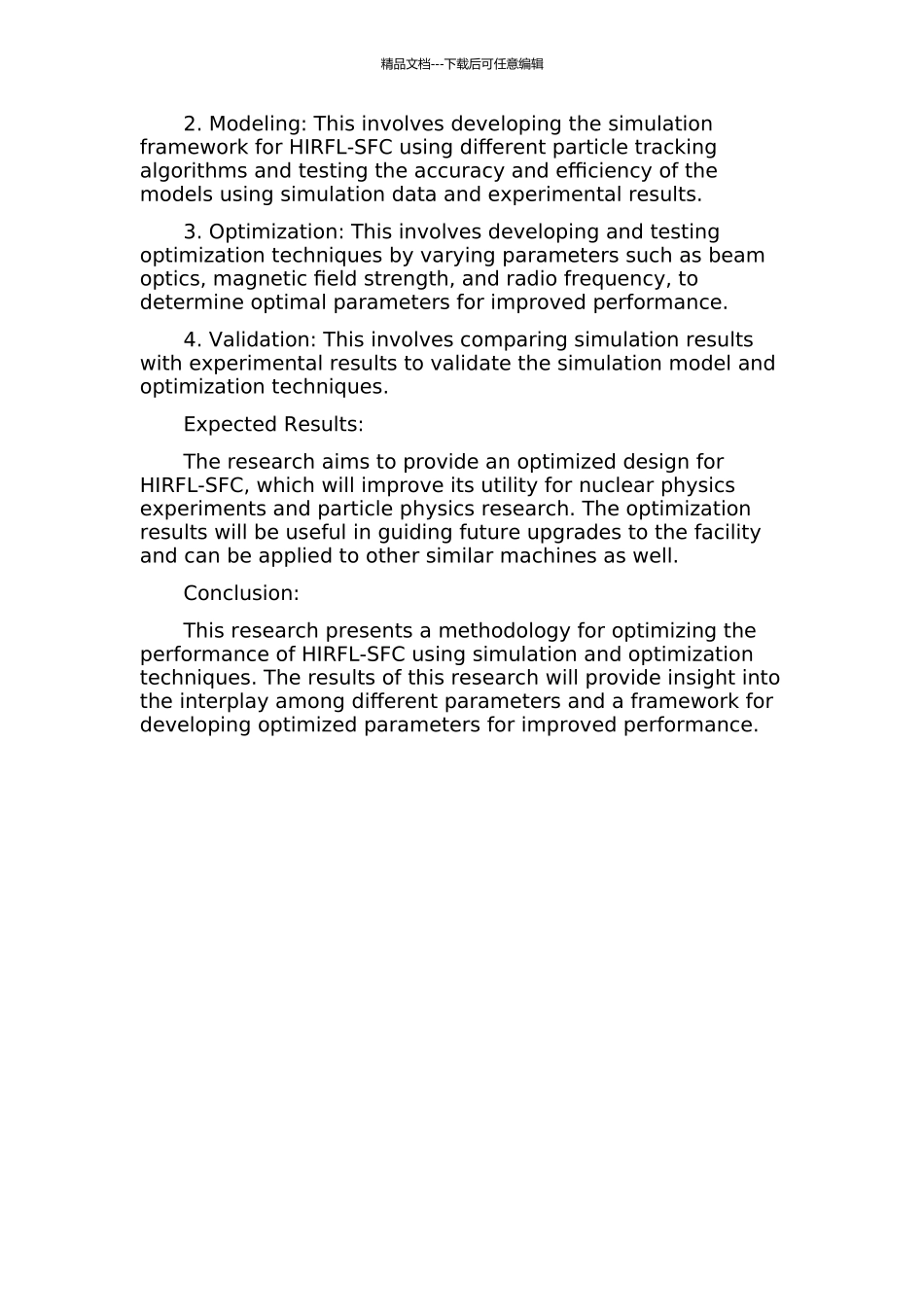精品文档---下载后可任意编辑HIRFL-SFC 模拟及优化讨论开题报告Title:Simulation and Optimization of HIRFL-SFCIntroduction and Background to the Research Question:HIRFL-SFC (Heavy Ion Research Facility in Lanzhou - Sector Focusing Cyclotron) is an important tool for nuclear physics experiments and particle physics research. The facility has the capacity to provide different ions within an energy range of tens of MeV to several GeV/nucleon, which enables it to be used for various studies in material science, life science, and astrophysics.The operation of HIRFL-SFC involves a complex interplay of parameters, including beam optics, magnetic field strength, and radio frequency control. Design and optimization of such parameters require extensive effort involving detailed calculations, simulations, and experimental tests. Although several studies have been conducted on HIRFL-SFC, there is still room for improvement and further optimization.Research Question:To optimize the performance of HIRFL-SFC, this research aims to carry out simulations using different particle tracking algorithms and optimization techniques to investigate the interplay among different parameters.Objectives:1. To develop a simulation framework for HIRFL-SFC using different particle tracking algorithms.2. To carry out simulations on the existing HIRFL-SFC design and optimize the behavior of the machine.3. To determine the optimal parameters for improved performance.Methodology:The proposed methodology for this research encompasses the following:1. Literature review: This involves reviewing existing studies on HIRFL-SFC, particle tracking algorithms, and optimization techniques.精品文档---下载后可任意编辑2. Modeling: This involves developing the simulation framework for HIRFL-SFC using different particle tracking algorithms and testing the accuracy and efficiency of the models using simulation data and experimental results.3. Optimization: This involves developing and testing optimization techniques by varying parameters such as beam optics, magnetic field strength, and radio frequency, to determine optimal parameters for improved performance.4. Validation: This involves comparing simulation results with experimental results to validate the simulation model and optimization techniques.Expected Results:The research aims to provide an optimized design for HIRFL-SFC, which will improve its utility for nuclear physics experiments and particle physics research. The optimization results will be useful in guiding future upgrades to the facility and can be applied to other similar machines as well.Conclusion:This research presents a methodology for optimizing the performance of HIRFL-SFC using simulation and optimization techniques. The results of this research will provide insight into the interplay among different parameters and a framework for developing optimized parameters for improved performance.

